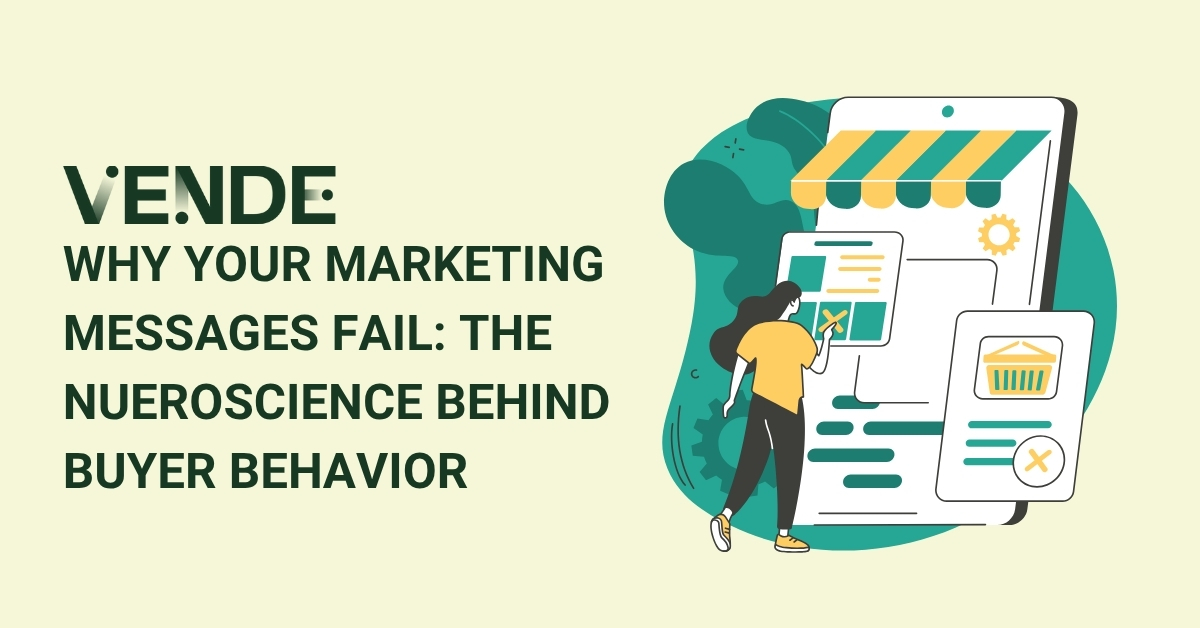
Mastering the Craft: A Comprehensive Guide to Building B2B Social Content That Converts
Building effective B2B social content that converts is a challenge many businesses face today. With the rapid evolution of digital marketing, it's not enough to merely exist on social media platforms. The game is now about captivating audiences, sparking conversations, and driving meaningful engagements that ultimately lead to conversion. The compelling blend of strategy, creativity, and connectivity that social media offers is transformative. Yet, for content to resonate and, more importantly, convert, it requires a deep understanding of dynamics. B2B marketing aims not just to generate likes or shares, foster relationships, build credibility, and facilitate tangible conversions. So how can one navigate this complex terrain to craft social content that not only engages but also catalyzes action?
The task can seem daunting, especially when targeting businesses with varying needs, goals, and expectations. However, when approached with insight and innovation, building B2B social content that converts can be an invigorating journey. This comprehensive guide will equip you with practical strategies and insights to make this journey rewarding.
Understanding Your Audience and Building Relevance
Before any effective strategy can take form, a profound understanding of your audience is the cornerstone. The task for businesses isn't just about identifying their consumers, but decoding their desires, understanding their social media interaction patterns, and determining what kind of content sparks their interest. The following principles are pivotal in crafting B2B social content that transforms passive observers into active customers:
- Identify Your Audience: One of the first steps in forming a connection is identifying who you are trying to reach. To what industry do they belong? What is their professional title? A thorough understanding of your audience members is instrumental in crafting content that aligns with their preferences and requirements. It is essential to create a personalized experience to make your audience feel as if they are understood, and their unique needs are being catered to and met.
- Understand their Pain Points: Each audience group faces unique challenges and problems. What tribulations do your ideal customers grapple with that your product or service can alleviate? By producing content to address their pain points head-on, you demonstrate your brand's value proposition while establishing trust and building a relationship. Doing so allows you to position your brand as an expert in the industry, a thought leader who understands and solves customer problems.
- Know Their Social Media Habits: Your audience's digital footprint can offer valuable insights. Which social platforms do they frequent? When are they most active? Adjusting your social media strategy to mirror these habits increases the odds of getting your content noticed and ensuring your target audience interacts with it. It's more about meeting your audience where they are than posting something that would interest you. It is how you will get the most out of these moments of social media engagement.
- Create Relevant, Valuable Content: Content is king, but the kingdom crumbles if the content isn't high quality. Your content needs to be a trifecta of relevant, valuable, and intriguing to your audience. This powerful combination fuels engagement, encourages social shares, and spurs conversions. It means going beyond mere product promotion to sharing insightful articles, industry news, how-to guides, or thought-leadership pieces your audience would find helpful.
By cementing your grasp on your audience's needs and priorities and promising to contribute substance through your posts, you lay a robust groundwork for your B2B social media endeavors. Armed with this perspective, you're in the perfect position to curate content that not only communicates effectively with your audience but also persuades them to become clients. As your journey unfolds, let a continual dedication to your brand ethos and your audience be your guide and compass. Crafting B2B social content that converts starts with understanding your audience and prioritizing relevance in your content. From there, you'll be on your way to building a successful B2B social content strategy that drives conversions.
The Art of Conversion: Driving Decision-Making Through Content
Creating B2B social content that connects is just half the battle. The next, perhaps most crucial, step is driving conversions - transforming your social media followers into active customers. How do you foster this transformation in B2B, where sales cycles can be extensive and decision-making processes complex? The secret lies in understanding and influencing the buyer's journey, providing engaging content that propels active decision-making. Here are some strategies to achieve this goal:
- Start Conversations with Thought-Provoking Content: To turn the tide in your favor, your content must ignite dialogue. Posting thought-provoking, opinion-based, or even controversial (yet respectful) content can stimulate discussions. Remember, a post that sparks a conversation is far more likely to be shared, liked, or commented on, amplifying its reach and influence.
- Solution-Oriented Approach: Businesses are looking for solutions to their problems. Highlight how your product or service solves their challenges in unique ways. Use case studies, testimonials, and success stories to demonstrate real-world applications and tangible benefits.
- Use Visual Elements to Boost Engagement: Human brains process visuals 60,000 times faster than text, making visual content an effective tool for engagement. Infographics, images, videos, or emojis can make your posts more attention-grabbing, stimulating higher interaction rates.
- Calls to Action (CTAs): An effective CTA is one of the most critical elements in conversion. Make your CTAs clear, compelling, and contextually positioned within your content. They should provoke immediate responses, such as 'Download the E-book,' 'Sign up for a Free Trial,' or 'Schedule a Demo Now.'
- Engagement Opportunities: Invite your audience to interact. You can accomplish this through comments, likes, shares, or even direct messages. There is a direct correlation between audience engagement and conversion. The more they are engaged, the higher the probability they will convert.
- Respond to Comments and DMs: A fruitful conversation is a two-way street. Being responsive to comments, questions, and direct messages encourages further engagement. It's a sign that your brand is attentive and values its audience's input. Even negative feedback or complaints offer an opportunity to highlight your brand's commitment to customer satisfaction, turning one-time critics into loyal customers.
- Leverage User-Generated Content (UGC): Nothing speaks more to the effectiveness of your brand than happy customers. Encourage your audience to share their experiences, stories, or reviews. Showcasing this user-generated content provides social proof and promotes a sense of community, encouraging further engagement.
- Run Contests and Giveaways: Another powerful strategy to spur engagement is through contests and giveaways. They add an element of fun and anticipation, encouraging your audience to interact with your brand. Plus, contests and giveaways make your audience more likely to share your content with their networks, amplifying your brand reach.
Mastering the art of conversion in B2B social content isn't about quick fixes or salesy gimmicks; it's about building a trusted connection with your audience, understanding their needs, and guiding them toward the solutions you provide. By incorporating these strategies into your B2B social content, you can create meaningful engagements that convert into successful business results.
Balancing Quality and Quantity: Crafting Consistent, High-Impact B2B Social Content
In the ever-evolving world of social media, content is king, but consistency is queen. The ideal B2B social content strategy balances quality and quantity - crafting consistently compelling content that resonates with your audience and compels them to act. But how do you achieve this delicate equilibrium? Here are some strategies to guide you:
- Establish a Content Calendar: Consistency starts with a plan. Establish a content calendar outlining what to post, when, and on which platform. This ensures a steady stream of content, keeps you organized, and allows for strategic planning around key events or dates.
- Focus on Quality: While maintaining a consistent posting schedule is essential, it should never come at the expense of quality. Every piece of content you publish should provide value, be well-crafted, and reflect your brand identity.
- Provide Value in Exchange: We live in an era where audiences are more discerning and demand value in exchange for their time and attention. This value can be provided through insightful blog posts, educational webinars, informative infographics, or industry whitepapers. When your content demonstrates genuine value to your audience, it inevitably sparks a ripple effect - they are driven to distribute it, interact with it, and respond to your CTAs with the desired action.
- Diversify Content Types: Variety keeps your audience engaged. Alternate between blog posts, infographics, videos, webinars, and other content types to keep your feed fresh and appealing.
- Repurpose Content: You don't need to reinvent the wheel with every post. Repurpose your best-performing content across different formats and platforms to maximize its reach and impact.
- Leverage FOMO (Fear Of Missing Out): FOMO is a psychological trigger marketers can use to their advantage. Limited-time offers, exclusive deals, or one-off events can create a sense of urgency, prompting your audience to take immediate action and thereby driving conversions.
- Analyze and Adjust: Use social media analytics to track the performance of your content. Identify what works and doesn't, and then adjust your strategy accordingly.
Balancing quality and quantity in your B2B social content is a continuous process that requires planning, creativity, and flexibility. But by implementing these strategies, you can ensure a consistent, high-quality content stream that holds your audience's attention and drives conversion.
Creating B2B social content that converts is an art and a science, requiring strategic planning, creative execution, and continuous adaptation. By prioritizing relevance and engagement, driving decision-making through content, and maintaining a consistent, high-quality content stream, you can unlock the full potential of your B2B social content strategy and turn your social media platforms into powerful conversion engines.
Harnessing the Power of Analytics in B2B Social Content
Analytics plays an instrumental role in your B2B social content strategy, and there are ways to use it to your advantage so it can improve your overall conversion rates and strategies.
- Set Clear, Measurable Objectives: Every marketing campaign begins with a goal. You need to outline what exactly you want to achieve with your social media content. Do you want to increase brand visibility, drive traffic to your website, or boost conversions? Each of these objectives demands unique key performance indicators (KPIs). For instance, you need to focus on metrics such as click-through rates (CTRs) and referral traffic from your social media channels to drive traffic.
- Utilize Analytics Tools: There are a plethora of analytics tools available. These can range from built-in options like Facebook Insights, Twitter Analytics, and LinkedIn Analytics to third-party tools such as Hootsuite, Buffer, or Sprout Social. Each option provides varying depths of information about your content's performance, audience demographics, optimal posting times, and more. These tools offer a wealth of data at your fingertips and aid in fine-tuning your social media strategy for better conversions.
- Understand Your Audience: Once you get a hold of the analytics, it's crucial to interpret this data to understand your audience better. This involves knowing their geographic location, age, gender, online behavior, and what type of content resonates with them. Armed with these insights, you can craft content that caters to their needs, tastes, and preferences, thereby enhancing the likelihood of engagement and conversion.
- Monitor and Adapt: The digital landscape is ever-changing, and what works today might be less effective tomorrow. Regularly monitoring your content's performance is vital to staying ahead of these shifts. This means revisiting your analytics often, analyzing the results, and making data-driven decisions. Be flexible and adapt your strategy based on what the analytics suggest.
By implementing these methods, you'll ensure your B2B social content strategy is implemented promptly and is guided by data and analytics, thus improving your chances of driving conversions.
Personalization: The Key to Engagement
The importance of personalization cannot be overstated. Let's dive into its impact and how to implement it into your strategy.
- Understanding Personalization: In its simplest form, personalization is about making your audience feel special. It's not about you or your brand; it's about your audience and how your brand can offer them value. Personalization in B2B social content means tailoring your messaging to speak directly to your audience's pain points, desires, and industry concerns. It’s about creating content that resonates with them personally, fostering an emotional connection that aids conversion.
- Segment Your Audience: The first step towards personalization is understanding and segmenting your audience into distinct categories. You can segment your audience based on their industry, job role, geographical location, or where they are in the buying process. Each segment will have unique needs and preferences, and segmenting allows you to tailor your message to each group's specific requirements.
- Create Buyer Personas: To personalize your content effectively, developing comprehensive buyer personas is crucial. These are semi-fictional representations of your ideal customers, with details about their job roles, company size, industry challenges, goals, and pain points. Having these personas at hand when creating content will help ensure your messaging directly speaks to your audience's needs.
- Tailored Messaging: Now that you have created audience segments and buyer personas, it's time to craft personalized content. This could be blog posts, webinars, eBooks, or social media posts, each tailored to address your personas' specific needs and interests. For instance, if you are targeting CTOs in the tech industry, a blog post about 'Top Tech Innovations CTOs should be aware of' might be an engaging piece of content.
- Measure and Refine: Personalization is not a one-and-done process. It requires continuous refining and improvement. Use your analytics data to measure your personalized content's effectiveness. Are you seeing increased engagement? Higher conversion rates? Use this data to refine your approach and continuously improve your personalization strategy.
By personalizing your B2B social content, you're not just throwing messages into the void but directly addressing your audience's needs and interests. This creates a sense of understanding and trust, which is essential for conversion in the B2B sphere.
Building Trust Through Transparency in B2B Social Content
In today's hyper-connected world, transparency has never been more crucial. Let's explore how you can enhance trust and foster deeper connections with your audience through transparency in your B2B social content.
- Emphasize Authenticity: Today’s savvy consumers, including B2B buyers, can see through inauthentic messaging. To establish trust, it's essential to prioritize authenticity in your content. This means being genuine, honest, and open in your communications. It also means acknowledging your mistakes when they occur and outlining the steps you're taking to correct them. This authenticity builds trust and shows your audience that you value their time and business.
- Openness About Your Processes: Another aspect of transparency is being open about your processes. This could include sharing behind-the-scenes content about how your products are made, how decisions are made within your organization, or even how you address customer service issues. By providing insight into these areas, you help your audience understand your values and how you operate, building trust along the way.
- Clear and Consistent Communication: Clear and consistent communication is key to building trust. Ensure your messaging is coherent across all channels and that any changes to your products, services, or company are communicated promptly and clearly. Trust can be quickly eroded if your audience is left to guess or find information from third-party sources.
- Social Proof: Social proof, like testimonials and case studies, can be powerful in building trust. It shows potential clients that others have successfully used your product or service and achieved their desired results. However, these must be real, genuine testimonials. Any hint of fabrication can significantly damage your brand’s reputation.
- Interactive Q&A Sessions: Consider hosting interactive Q&A sessions on your social channels. These sessions can address common concerns or questions that potential clients might have. By openly addressing these concerns, you're showing that you're fearless in engaging directly with your audience and that transparency is one of your brand's core values.
Building trust through transparency isn't a strategy that yields immediate results. It's a long-term game. But the patience and effort put into it can result in deeper relationships with your audience and higher conversion rates in the long run.
The journey to building B2B social content that converts is intricate, multi-faceted, and vital for any brand looking to thrive in the digital age. We've traversed through the landscapes of understanding your audience, using strategic storytelling, harnessing the power of analytics, engaging in thought leadership, leveraging influencer collaborations, and fostering trust through transparency. All these components intertwine to form a robust, effective strategy, creating compelling content that resonates with your audience and drives conversion.
In an ever-evolving digital world, the strategies we've discussed offer clarity amidst the cacophony. Remember, the beauty of social media is its fluidity and potential for real, engaging conversations. Strive for authenticity and align your tactics with your brand values for maximum impact. Take this knowledge and infuse it into your B2B social content strategy. Experiment, learn, and iterate - that's the rhythm of success in the digital landscape. As you proceed on this journey, remember the ultimate aim is to create meaningful connections and provide valuable content that inspires your audience to take the desired action.







